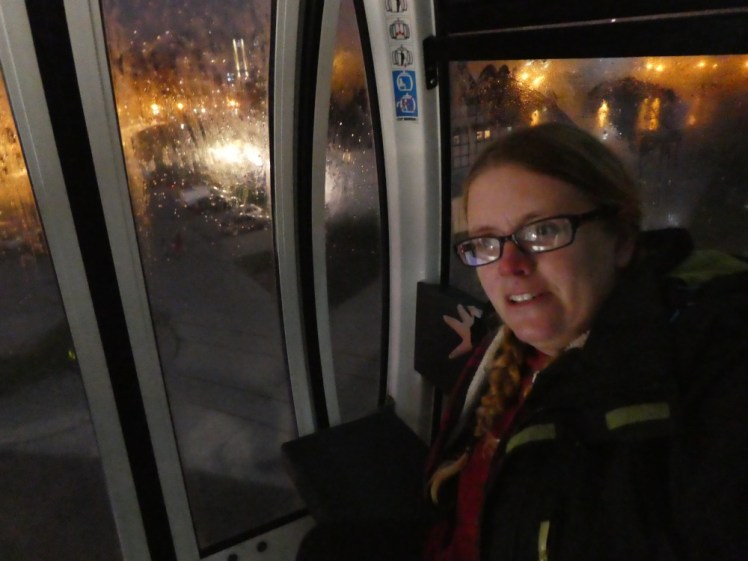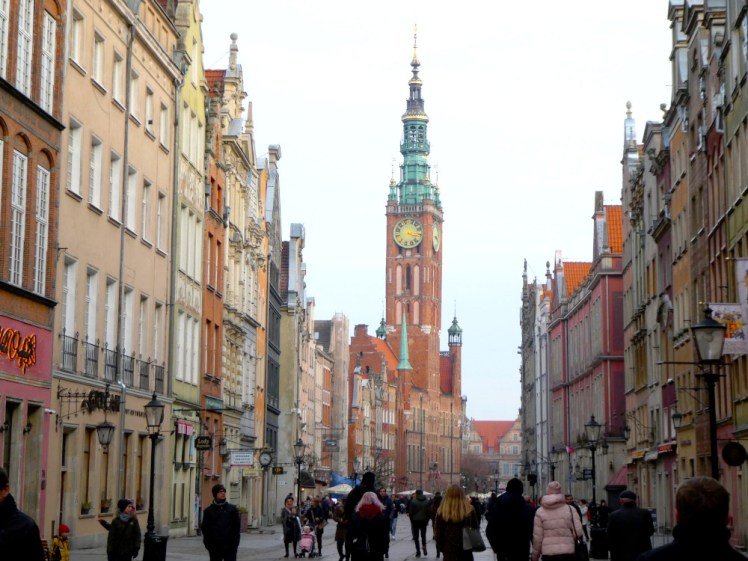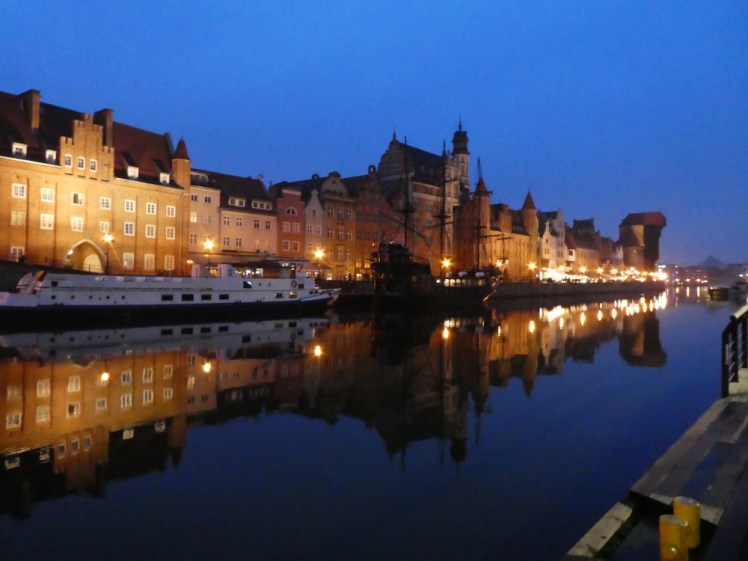This year, I’m going back and filling in gaps in my blog, either where I never wrote the thing in the first place, or where it needs to be deleted and rewritten. I’ve never been particularly happy with the content from Gdańsk in 2019 so that was an obvious candidate for rewriting – but also, there’s a whole pile of new Poland content coming and I want my Poland tag to look less grim when it arrives.
I went to Gdańsk for a couple of reasons – someone at work talked it up and I found a cheap (Ryanair!) flight from a relatively local airport and I had more annual leave left over by November than I expected, after saving it for 20 days in Russia in August/September. So you bet I was going to use up all that leave before the end of the year. Gdańsk sounded nice and so off I went.
I was there about three days, by the time I’d landed on Friday morning and got to the airport again on Monday afternoon. I spent Friday in Sopot, part of Poland Gdańsk/Sopot/Gdynia TriCity area, and that’s going to get its own post on Thursday. But today I’m going to talk about Gdańsk and what I specifically want to talk about is how I wasted my two and a half days there.
I had a very nice apartment in the Old Town, just off the main square but with it visible at an angle from my living room windows, so it couldn’t have been any better situated. According to the video I made at the time I did nothing during the days and only went out when it got dark. Let’s talk about that. I was just a little walk from the Green Gate, which connects the Old Town to the river/canal and I spent my evenings strolling up and down there. There are a lot of lights, they reflect in the water and there’s a big wheel which, in hindsight, would have given me better views of the city by day. On the other hand, it wasn’t particularly good weather. The sky remained white the entire trip – not grey and certainly not blue and maybe it would have been too hazy by day. Anyway, I enjoyed walking by the water, looking at the boats and the lights and the cranes and going on the wheel and that was a perfectly satisfying way to spend a couple of evenings for someone who doesn’t drink.

During the day, I went on a walking tour. I don’t do this as often as I should but it’s a very good way to get to know a city. I’ve got a post lined up for later this month about why using a tour guide rather than doing everything independently is a great thing. We covered all the architectural and historical jewels of Gdańsk with a local guide who knows the city inside out. I’m going to try not to get bogged down in the war stories. Obviously Poland’s recent history is pretty much war history and although it’s important to see that and understand it, I want to try to see the country in its modern phase. Not “what was Poland like a century ago?” but “what is Poland like?”. However, in summary, the opening shots of WWII were fired here and the beginning of the end of Polish communism happened here and those are two things that have permanently shaped the city. Gdańsk changed hands between Poland and Germany a few times and by 1939, its German population outnumbered its Polish, despite being nominally a Polish city. So Germany tried to take it back.. Actually, Germany was firing on assorted bits of the Polish border earlier in the day but officially, this is where it all got started.

I know I went back into the cathedral by myself. It’s Brick Gothic, which isn’t my favourite style – too much brick, not enough Gothic. It’s very big and has some very big stark faces. Inside, the pillars are all quite Gothic but it all looks very bare, like it’s not quite finished. I think I’d regret not having visited but at the same time, I don’t think I particularly enjoyed it.

I also went to a museum in the spectacular Town Hall, which has a distinctive tall thin tower and has something of the St Pancras Hotel about it. The reason I went was for the Red Room, which has an amazing ceiling. I think my guidebook undersold it – it said “the highlight […] is the central oval ceiling painting” when in fact, it’s a kind of red and gold maximalist gallery wall except it’s on the ceiling – pictures crammed in wherever they’ll fit and with thick 3D gold frames. While I was at it, I explored the rest of the museum, which is the Gdańsk Historical Museum and is full of reproductions of various rooms from Polish life – an oldey-timey living room, a pharmacy, a shop, a room full of blue tiles, a room full of silver plate and of course, an exhibition on the war. It gave me a bit of a jolt to see Gdańsk in the 40s during its occupation, with Nazi flags hanging from all the buildings but you can’t blame a city for what it does when the bad guys move in.

Speaking of the war, you really need to know that Gdańsk got flattened – and I mean flattened. Pretty much everything you see, anything that looks older than about twenty years old, has been rebuilt from the ground up. Gdańsk looks much like it would have done during its Hanseatic heyday a couple of hundred years ago but it’s all new, even what I’ve been cheerfully calling “the Old Town”. The Historical Museum has photos of the devastation and what they’ve done since then is incredible. From glancing through my guidebook, I suspect most of the rest of Poland is in the same boat, ie that everything that looks old has been rebuilt in the last 80 years but I’ll report back.

The only other thing worth mentioning is that I bought some amber. Souvenirs in tourist areas around the Baltic heavily feature amber. I bought an amber necklace for myself in Vilnius and in Gdańsk, I bought an elastic bracelet of amber chips and a couple of beads to go on my travel bracelet. Actually, they sat in a tray until only a couple of weeks ago when I finally found a suitable bracelet for them. I love amber. I like the bright translucent orange best but I like a bit of milky yellow and a hint of green for variation. I’m also aware that real amber is quite expensive and a lot of the cheap stuff you’ll find in tourist shops is fake. Ergo I have no idea whether my bracelet or my beads are genuine or not but they’re pretty and I like them.
And I think that’s it. Evenings enjoying the lights on the water, walking tour on Saturday, museum on Sunday and then I think all I did on Monday on my way to the plane was to get packed and take photos of my apartment.

Oh, one more detail. I really struggled to get into town from the airport. I don’t speak or read Polish, I don’t think the train ticket machines speak as much English as I’m used to and you need to know the name of the station you’re going to. I’ve learned today that I’m going both in and out of the wrong station in Łódź in August and I’m going to have to go and check another couple of cities, and I had no idea which station I wanted in Gdańsk, which is how I struggled both to get a ticket to it and then get a train to it. I’ve got a vague idea I may have managed an entire circle and finished up back at the airport. I definitely spent a while on the platform of a station I had no intention of visiting, so I guess my number one tip for any trip to Poland is to double and triple check your stations.
